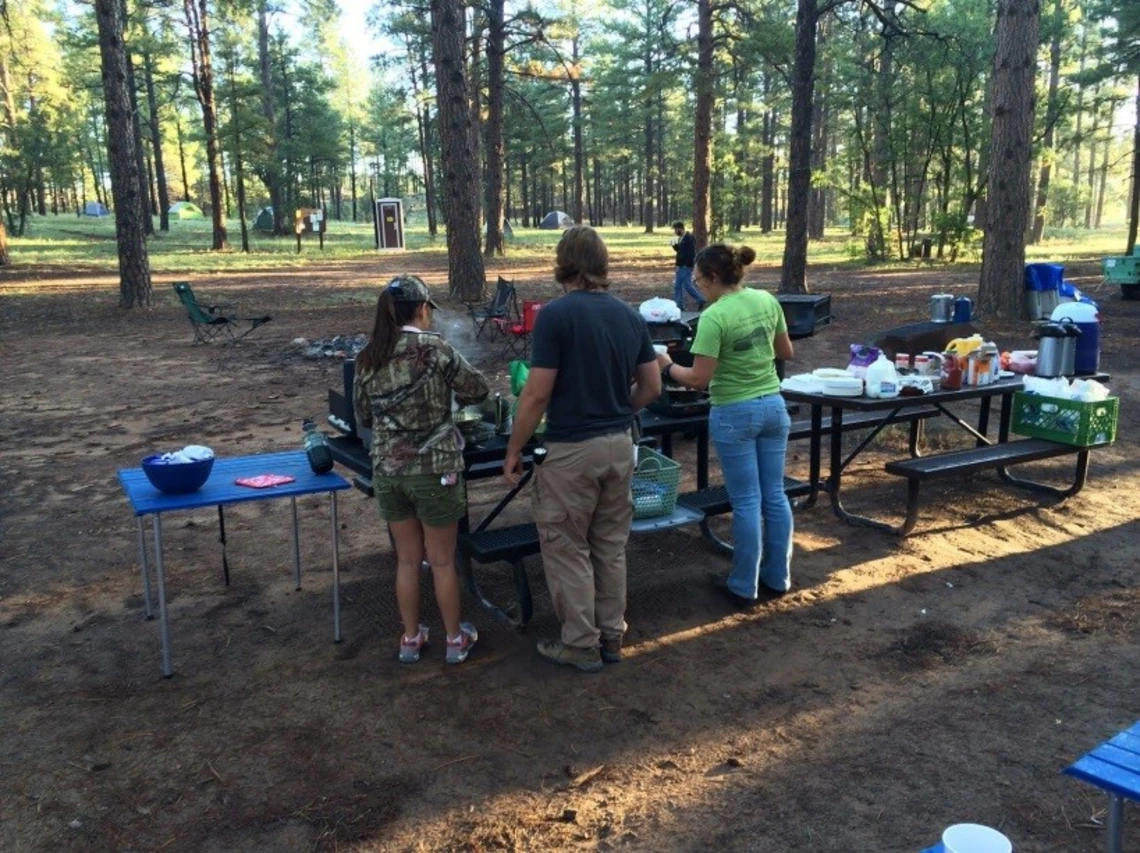Tierra Seca Club participants and contributes to the Annual Summer Meeting the Society for Range Management Arizona Section.

 August 14th and 15th in Show Low, Az, students of Tierra Seca were met by cool temperatures, great barbeque, and presentations given by a wide variety of professionals representing both natural resource management and research at the annual meeting of the Arizona section of the Society for Range Management. Among those represented were the US Forest Service, Arizona State Land Department, Natural Resources Conservation Service, Arizona?s three large universities, and various ranchers from around the state. In addition to celebrating 100 years of community partnership through the cooperative extension, this meeting focused on the 20+ year accomplishments of the White Mountains grassland and forest ecosystem restoration partnership.
August 14th and 15th in Show Low, Az, students of Tierra Seca were met by cool temperatures, great barbeque, and presentations given by a wide variety of professionals representing both natural resource management and research at the annual meeting of the Arizona section of the Society for Range Management. Among those represented were the US Forest Service, Arizona State Land Department, Natural Resources Conservation Service, Arizona?s three large universities, and various ranchers from around the state. In addition to celebrating 100 years of community partnership through the cooperative extension, this meeting focused on the 20+ year accomplishments of the White Mountains grassland and forest ecosystem restoration partnership.
Thursday and Friday were very exciting days for members. Scientists presented some of their latest research, ranchers shared personal stories, and top members of various state agencies told of the latest developments in partnerships and programs that are taking place at this very moment. Friday was marked by a field day to showcase some of the local ranches and the effects of various management practices to thin stands of pinyon, juniper and ponderosa pine to reduce fuel levels.
Tierra Seca members not only benefited from networking with some of Arizona?s greatest working professionals, but they also contributed Thursday morning by providing a hearty burrito breakfast to attendees of the conference. An early wakeup call did not faze the students one bit, and their delicious food was even patronized by Dean Burgess.
Emilio Corella, Sophia Leone, Emily Pecilunas, Cassidy Solper, and Leland Sutter represented Tierra Seca and the University of Arizona, and were supported by their club advisor Dr. Mitch McClaran.

This panoramic picture shows the effects of the June 2014 San Juan fire in Apache-Sitegraves National Forest. The left side experienced a severe crown fire and the fire dropped to the ground on the right side of the image. The right had pine density thinned prior to the fire, and this resulted in the lower intensity fire and no tree mortality. All trees died on the left side because of high fire intensity.

